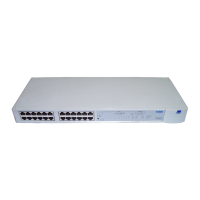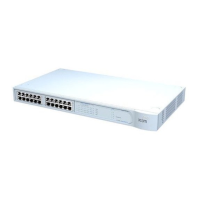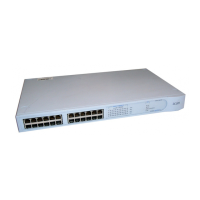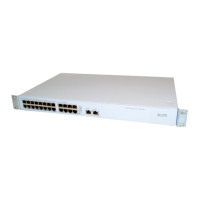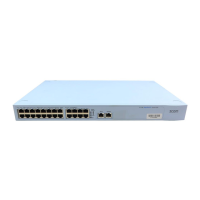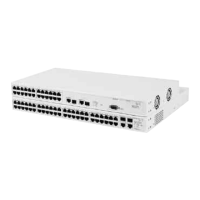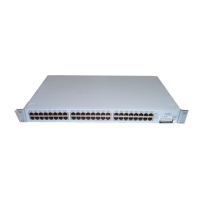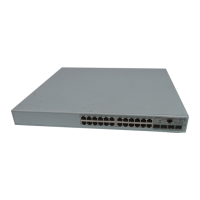16 CHAPTER 2: SWITCHING CONCEPTS AND NETWORK CONFIGURATION EXAMPLES
Routing Protocols Routers communicate with each other through protocols that operate at
the network layer level. These routing protocols determine whether
routing tables are static or dynamic and whether link-state (OSPF) or
distance-vector routing (RIP) is used. In link-state routing, each device
maintains a part of a replicated, distributed database of routing
information and collects the local link-state information from all other
devices. In distance-vector routing, each device calculates the best path to
all destinations and then shares that information with neighboring
routers.
There are a large number of standards-based routing protocols. The
Layer 3 Switch offers the Routing Information Protocol (RIP) and the Open
Shortest Path First Protocol (OSPF).
Routing Tables A routing table contains routing information including destination/next
hop associations and path desirability. Next hop associations tell a router
that a particular destination can best be reached by sending the packet to
a specific router which represents the ‘next hop’ on the way to the final
destination. When a router receives a packet, it examines the destination
address and determines the most appropriate next hop.
Path desirability concerns the most efficient path a packet can take. The
source and destination devices compare routing metrics to determine the
most desirable path between them. A routing metric is a standard of
measurement used by routing algorithms to determine the most efficient
path to a particular destination. Routing algorithms store route
information in routing tables. This information varies with the routing
algorithm used.
Dynamic and Static Routes
Routing tables usually consist of a mixture of dynamic and static routes.
■ Dynamic routes allow routers to continually learn the network
topology on a regular basis and update their own routing tables
accordingly. They are learned using a routing information protocol.
Routers using the Routing Information Protocol (RIP) send out RIP
advertisements at regular intervals to advertise their network status to
other routers. Dynamic routes age out automatically if an update is
not received for a device for a set period of time.
